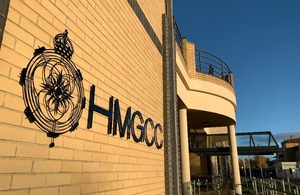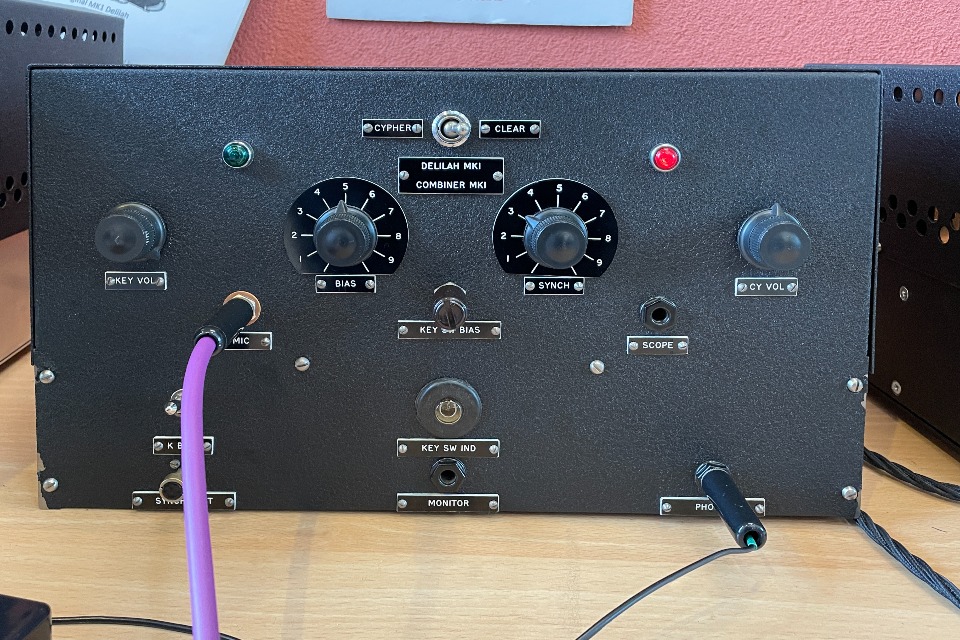Government body behind secret tech opens doors to expand engineering excellence
A government body which creates secret technologies to support national security is today launching a new drive to work more openly with technology firms and academics.

HMGCC offices, image by HMGCC. Crown Copyright. Cropped from original.
- A UK government body with a history of secret engineering work for national security is seeking to work with companies and universities more openly than ever before on technology projects to help keep the country safe.
- His Majesty’s Government Communications Centre (HMGCC), set up in 1938, is a former workplace of computing pioneer Alan Turing who is known for some of the computing innovations which helped shorten the Second World War.
- Its new initiative, called HMGCC Co-Creation, comes as rapid technological advances pose increasing challenges and opportunities to national security.
A government body which creates secret technologies to support national security is today launching a new drive to work more openly with technology firms and academics.
The initiative by His Majesty’s Government Communications Centre (HMGCC), in partnership with the Defence Science and Technology Laboratory (Dstl) comes as new technologies pose an ever-greater challenge to the people and agencies keeping the UK safe. It will allow HMGCC to work more closely than ever before with the companies and institutions at the forefront of technological innovation, and help the UK solve some of the most difficult problems facing all those working in service of the UK’s national security.
Partnerships with HMGCC, since it was established in 1938, have so far seen breakthroughs in keeping batteries charged in extremely cold environments, and in building secure telecoms solutions to help UK government organisations keep their people safe in some of the most dangerous parts of the world.
HMGCC, based at Hanslope Park near Milton Keynes, has been a centre of national security engineering excellence since its foundation. Computing pioneer Alan Turing used to work on HMGCC’s current site. Turing, whose work to break the Enigma cipher has been credited with shortening the Second World War by as much as two years, developed a world first in speech encryption – named Delilah – while at HMGCC.
HMGCC Chief Executive Officer George Williamson said:
We have hundreds of brilliant engineers and technicians here at HMGCC who, over the years, have come up with countless bespoke solutions to enable those striving to keep the country safe in our national security community.
That amazing work continues and now we also want to ensure we are reaching out to work more closely with external industry and academia, creating a broader hub of engineering excellence.
Going forward, we are really excited about the opportunities that these new ways of working will offer us, helping us to build on our technical capabilities at a time when the pace of technological advancement is extraordinary.
Examples of what HMGCC works on today could include helping develop tools so agencies operating overseas in often hostile, dangerous areas can communicate secretly, or by creating technologies to support the investigative techniques of agencies, such as surveillance. In these situations, the devices we create could be involved to help in intelligence gathering around suspected terrorists, or in cases of groups involved with serious crime. It is always about using technology to help keep the country safe.
Author Sir Dermot Turing, nephew of Alan Turing, said:
I am delighted at this initiative. It was at Hanslope Park that Alan Turing did some of his most inventive and secret work during World War Two, creating a machine to thwart enemy eavesdroppers trying to listen in on Winston Churchill’s secret phone-calls. The new HMGCC partnership continues in the same tradition of bringing in external talent for the same purpose – keeping us safe.
Dstl’s Chief Executive Dr Paul Hollinshead said:
HMGCC Co-Creation is an incredibly important partnership and gives both HMGCC and Dstl a much wider reach to find and work hand-in-hand with the best minds in the industrial and academic community than was possible before to help tackle national security challenges.
Notes to editors
If you are interested in working with HMGCC, click here
HMGCC works for the FCDO, falling under the responsibility of the Foreign Secretary. Originally established in 1938, HMGCC has a long history of technological innovation, attracting names such as modern computing pioneer Alan Turing, who worked on a speech encryption device called Delilah while at Hanslope Park in the 1940s.
HMGCC history
- Founded in 1938, HMGCC started life as a specialist in overseas bespoke wireless communications.
- It was set up as a new team to help maintain secure communications with overseas outposts in the event of war with Germany.
- Previously the main method had been to send encrypted, morse code messages over the international public telegraph network but the risk was that these could be easily intercepted by a hostile country.
- A new method was developed, to put in place a private network, sending encrypted messages over a short-wave radio, linking directly to and from overseas premises.
- A small communications team was put together to create this wireless network, an engineering support team, operating using the name ‘His Majesty’s Government Communications Centre’.
- The organisation grew rapidly during World War Two. By 1945 it had about 7,000 staff with a wide variety of skills, carrying out many roles. Supported by a production factory, the engineering team operated throughout to design and manufacture the bespoke equipment needed.
- Following his work on Enigma at Bletchley Park, Alan Turing first moved to Hanslope Park where he lived in a cottage.
- With most staff living on-site, there was an active social life which he took part in, playing chess and card games in the mess and attending dances. He gave evening lectures on mathematics and circuit design on site. It is believed Turing was nicknamed ‘the prof.’
Building Delilah
- Turing’s workspace was in the main laboratory which once stood on site at Hanslope Park.
- There he developed a speech encryption system called Delilah, working closely with Donald Bayley – who was a recent graduate in electronic engineering.
- Turing ran a competition to give the project a name. This was won by Robin Gandy who it is believed suggested that it should be called Delilah as she was the ‘biblical deceiver of men’.
- By the end of World War Two, Turing and Bayley had succeeded in making a working prototype. They demonstrated the system in operation to high level visitors, usually by playing a recording of a Churchill speech through it. At this point it was still effectively a prototype and more work would have been needed to produce a system that could be used in the field.
- It is likely that the original prototype lived on in storage with other wartime equipment at Hanslope Park. Much of this was eventually broken up or taken off site.

'Delilah' machine, image by HMGCC. Crown Copyright.
Building a Delilah replica
- Following in Turing’s footsteps, a group of volunteers known as The Delilah Rebuild Project, led by John Harper, began their efforts to rebuild Turing’s Delilah machine. The project was started by the team approximately 15 years ago and, throughout that time has been based in different locations.
- Today, HMGCC is supporting the team in its project, on site at Hanslope Park (where it has been since 2022). It is now in the final stages of completion and has been demonstrated partly operating using a speech from a Churchill recording.

Rebuilt 'Delilah' machine, image by HMGCC. Crown Copyright. Cropped from original.
Examples of HMGCC World War Two era devices
First HMGCC concealed transmitter – 1938/39
- Hidden inside a car loudspeaker, this is believed to be the first HMGCC concealed transmitter, built in 1938/1939.
- This is believed to have been used in a test exercise to see if signals from foreign agents operating in the UK could be detected.
- A small group hid this transmitter in a car and transmitted from various locations to see if it could be detected. This is a rare artefact and the earliest HMGCC device built into a concealment.

An early concealed radio transmitter made by HMGCC, image by HMGCC. Crown Copyright. Cropped from original.
MK III transmitter – 1939
- One of the first items made by HMGCC, this was the main radio transmitter used in overseas locations throughout World War Two.
- Its purpose was to enable those officials overseas to maintain contact with the UK. It was also used by some human agents and was small enough to be transported in a diplomatic bag.
- This transmitter was used on 1 September, 1939, from the UK embassy in Warsaw to inform the UK that German troops had crossed the Polish border.

Mark III transmitter used in the Second World War, image by HMGCC. Crown Copyright.